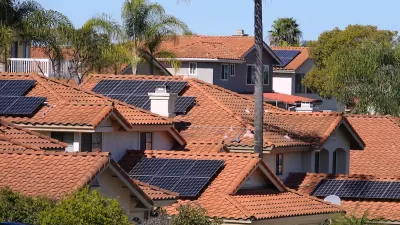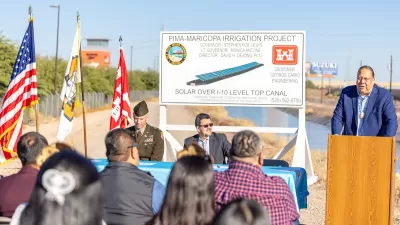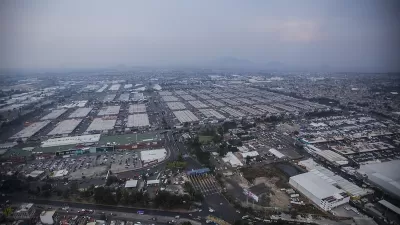Tesla’s fancy cars generate much of the company’s revenue, while its solar energy products are decidedly less flashy.

Elizabeth Lopatto headed to Byron Bay, Australia, to stay in a Tesla Destination, a mansion fully outfitted with high-tech renewable energy features, and to explore Tesla’s move into the residential solar sector.
"Living in Tesla’s imagined future, most of the activities of my life weren’t especially changed by switching the source from which the house drew energy. The only thing that might have qualified as a difference was me checking the Tesla app to see what was going on with my energy usage," she notes.
In South Australia, Lopatto also talked to residents using solar panels and Tesla Powerwall battery storage units. The government funded the systems, which were linked to create virtual power plants, for the mostly low-income residents. She describes a similar theme here about the easy shift to solar power facilitated by the Tesla products, where a blackout or bad weather has little effect and the only thing a resident might notice is a cheaper energy bill.
"This story is about the virtue of being boring, a perhaps underappreciated thing in our day and age. This is a story about not changing your life and how much better that can make it. That’s what Tesla is selling in terms of renewable energy: your life, but with fewer fossil fuels. Your house, powered by solar," writes Lopatto.
FULL STORY: I WENT TO AUSTRALIA TO TEST OUT TESLA’S VISION OF THE FUTURE

Trump Administration Could Effectively End Housing Voucher Program
Federal officials are eyeing major cuts to the Section 8 program that helps millions of low-income households pay rent.

Planetizen Federal Action Tracker
A weekly monitor of how Trump’s orders and actions are impacting planners and planning in America.

Ken Jennings Launches Transit Web Series
The Jeopardy champ wants you to ride public transit.

California Invests Additional $5M in Electric School Buses
The state wants to electrify all of its school bus fleets by 2035.

Austin Launches $2M Homelessness Prevention Fund
A new grant program from the city’s Homeless Strategy Office will fund rental assistance and supportive services.

Alabama School Forestry Initiative Brings Trees to Schoolyards
Trees can improve physical and mental health for students and commnity members.
Urban Design for Planners 1: Software Tools
This six-course series explores essential urban design concepts using open source software and equips planners with the tools they need to participate fully in the urban design process.
Planning for Universal Design
Learn the tools for implementing Universal Design in planning regulations.
Ada County Highway District
Clanton & Associates, Inc.
Jessamine County Fiscal Court
Institute for Housing and Urban Development Studies (IHS)
City of Grandview
Harvard GSD Executive Education
Toledo-Lucas County Plan Commissions
Salt Lake City
NYU Wagner Graduate School of Public Service





























